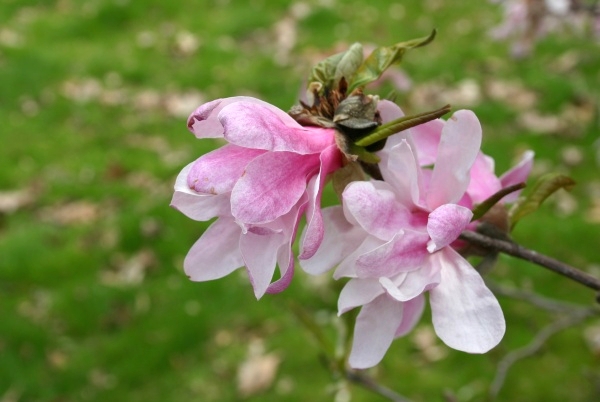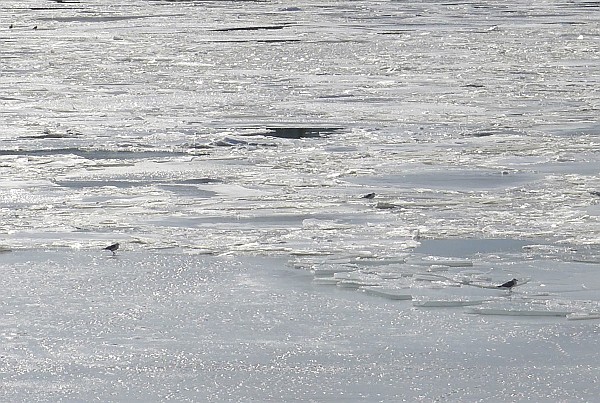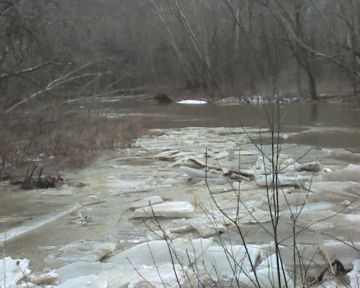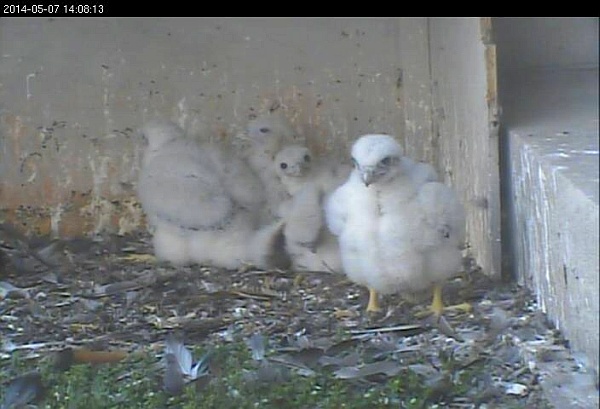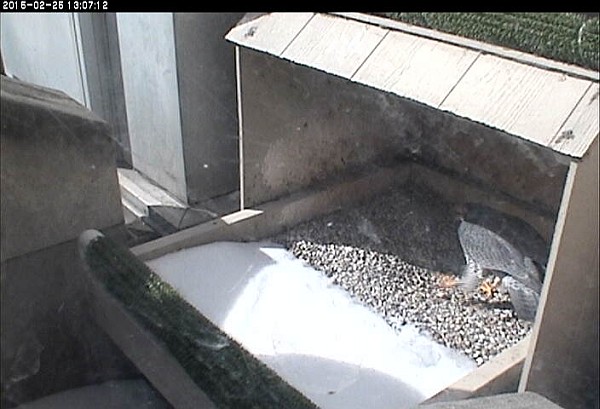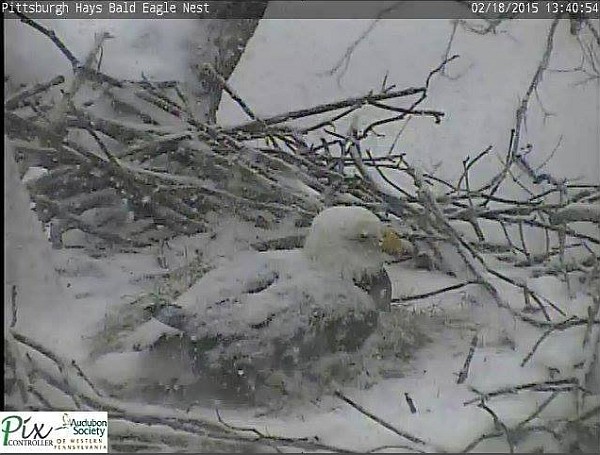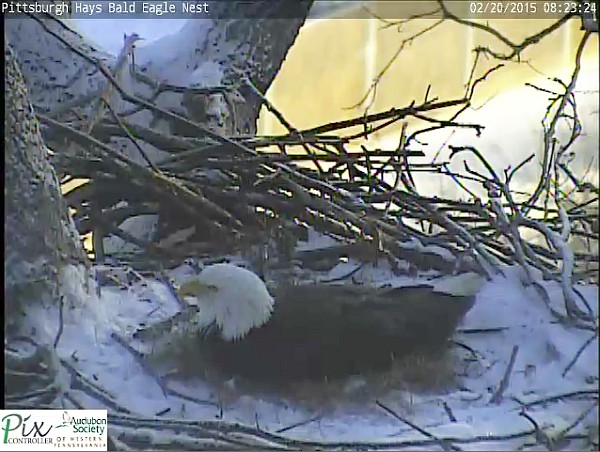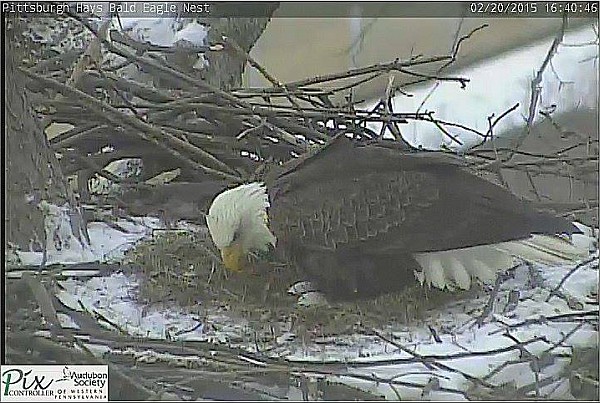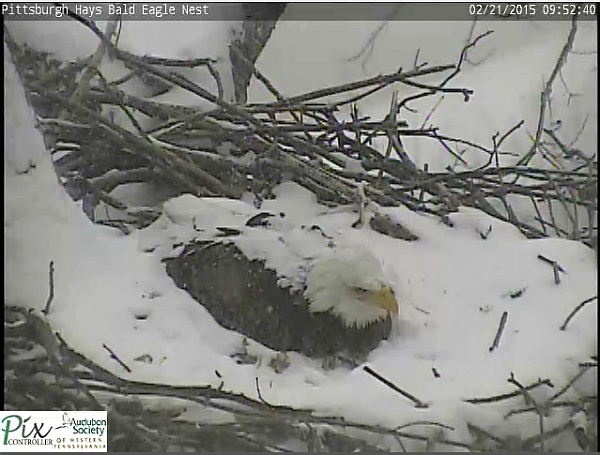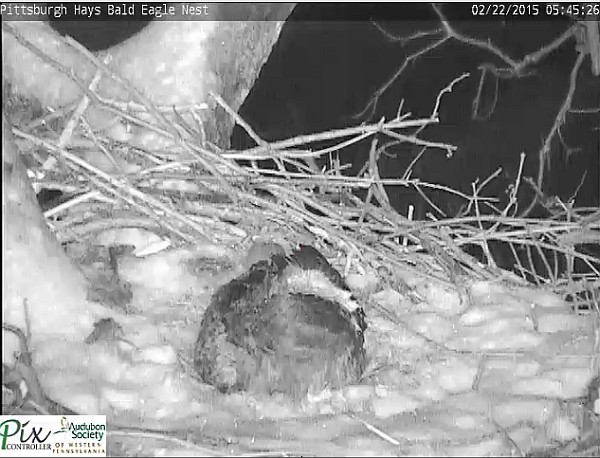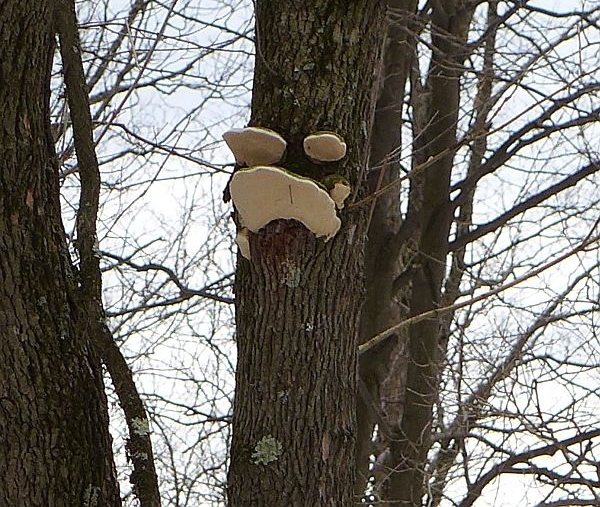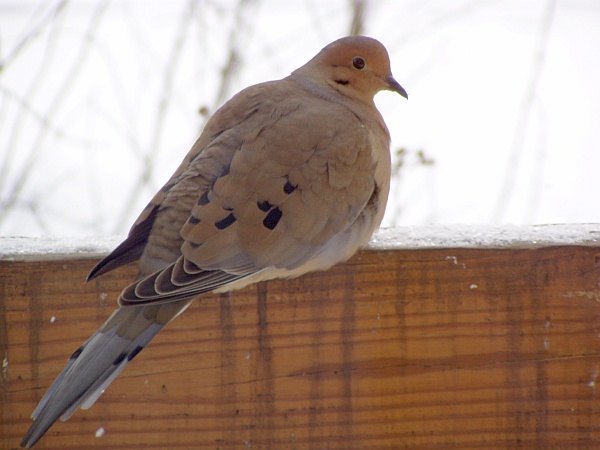
If you saw the peregrine banding at the Tarentum Bridge last May, you’ll remember the nest was in a dangerous place. The entrance hole pointed down over open water and there were no perches nearby. After banding the chicks the PA Game Commission placed them on the mid-river pier where they learned to fly in safety. (Click here to see last year’s site.)
Thinking ahead to this year, it’s no wonder the Game Commission decided to place a nestbox on the bridge. Rob Protz, Marge Van Tassel and I braved 9oF to watch the installation yesterday morning.
Brrr! Marge took our picture with one of the PennDOT crew.
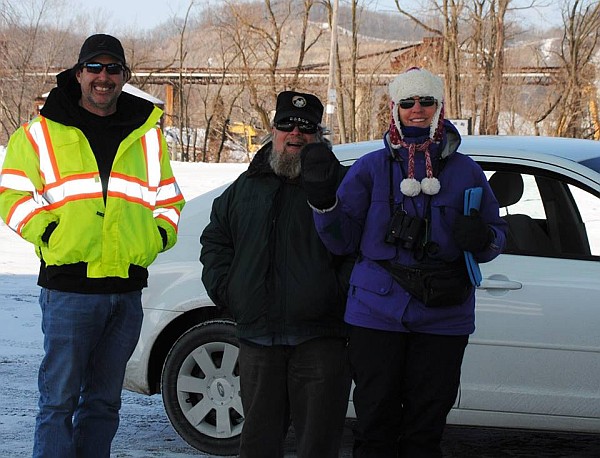
Before the installation began we saw two peregrines!
Around 9:00am the female 69/Z, nicknamed Hope, flew from the bridge. Rob Protz saw her land in a tree so we went over and Marge took her picture. (This was one of the few times I’ve ever seen a peregrine perched in a tree.) Within a half hour, Hope’s mate came by for a courtship flight and the pair disappeared upriver.
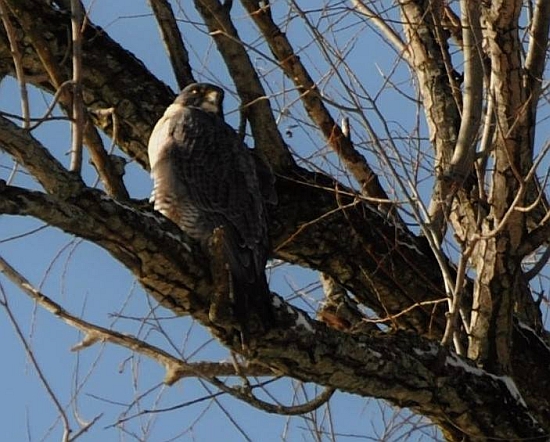
Meanwhile PennDOT District 11 blocked a lane of traffic on the bridge, set up the Bucket Truck, and delivered PA Game Commission biologist Tom Keller to the catwalk. While he climbed down the ladder to the mid-river pier, Hope returned and noticed something was up. She watched the project from the upriver navigation light.
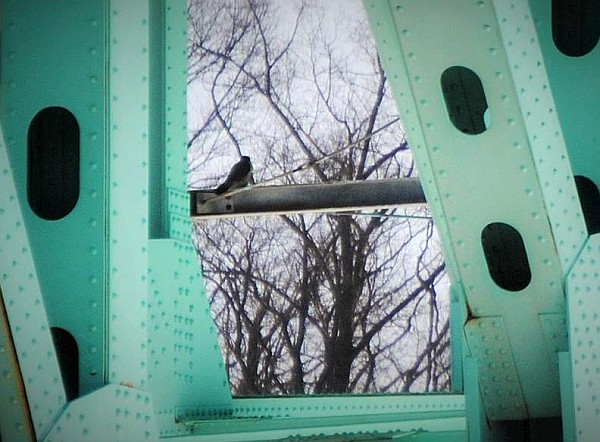
The Bucket delivered tools, gravel and the new nestbox to Tom.
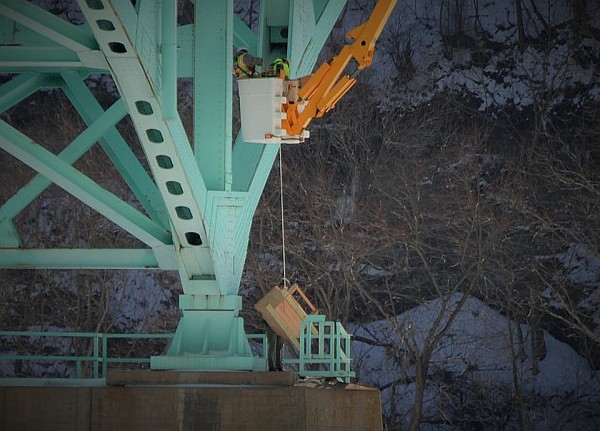
While he cleared ice from the pier he was joined by another member of the PennDOT crew.

They positioned the box with its back to the prevailing wind, drilled holes to anchor it, added a perch pole, and filled it with gravel.
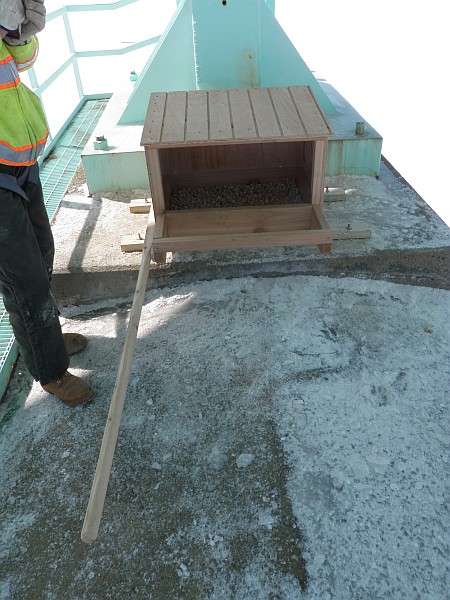
Ta dah!
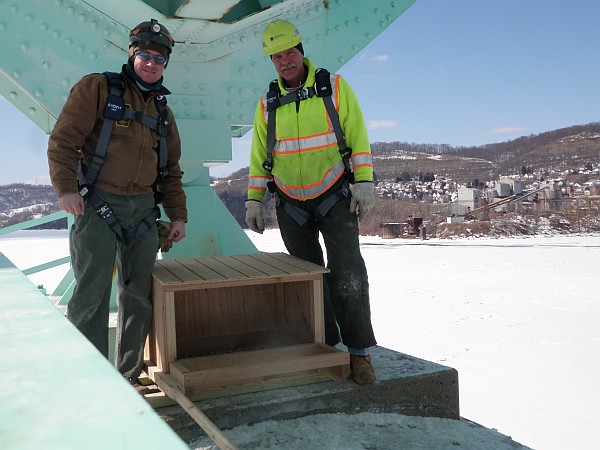
Now we wait and see, and hope that “Hope” will use it this year.
(photos by Marge Van Tassel, Kate St. John and Tom Keller. See captions for photo credits)
p.s. Steve, picture above on the bridge with Tom, is the one who built the box of cedar to PGC’s specification.
